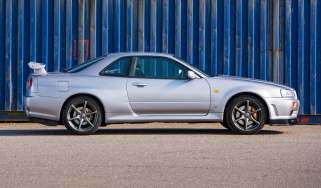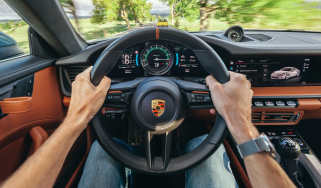'Everything you always wanted to know about wipers (but were too sensible to ask)'
Car companies employ people whose entire job is wipers, and it's more complicated than you might assume

The other week I was talking to a friend-of-a-friend about Ernest Hemingway. Bull fighting, Key West, iceberg theory, all that sort of thing. At some point I casually dropped into conversation that, ahem, I was a writer too. ‘Oh yea?’ this person replied, sceptically. ‘So what do you write about?’ Well, I said, I have a column in a car magazine so, you know, anything to do with cars really. ‘Like, windscreen wipers and stuff?’ they asked. No, no, you couldn’t write a whole column about windscreen wipers, I smiled. Or could you…?
I like windscreen wipers. You can’t deny they’re useful. I know how they work or, in the case of rain-sensing wipers, how they don’t. But let’s not get bogged down in the evils of the rain-ignoring system fitted to many cars. Perhaps some people like a set-up you can accidentally leave switched on so that three weeks after you last used the wipers, they’ll suddenly find a moment on a bone dry day to do a single unexpected sweep of the screen and scare the bejabbers out of you. No, writing a column about wipers would require more than that.
> 'Jaguar has a swish new design studio, but could it make Jag’s designs less swish?'
An automotive engineer mate confirmed that car companies employ people whose entire job is wipers, and it’s more complicated than you might assume. There’s aero for one thing. Wiper blades have to maintain contact with the screen even at speed, but a massive aerofoil might press them too firmly into the glass, making life hard for the motor, which already has its work cut out dragging the blades back down the screen at an elegant pace while under great air pressure. No car maker wants complaints from German customers that autobahn speeds cause the wipers to fly wildly up the screen and then judder back down at the pace of a tremulous sloth. This does not inspire confidence in a downpour.
Conversely, a really thick set of wiper arms can make a car seem more solid and reassuring. It was one of the appealing things about, for example, the peak era Subaru Legacy, giving it a sense of unflappability that paired perfectly with the mechanical feel of the gearchange and the warm thud of the boxer engine. If they’ve specced the wipers like this, you might have thought as you battled through acutely angled rain on a road through the Cairngorms, imagine the quality of the four-wheel-drive system. That’s the power of sturdy wipers.
This is all well and good, of course, but you can’t fill an entire column about windscreen wipers with vague thoughts about their thickness and the psychological effects thereof. There’s 850 words to get down here, you know. Hemingway used to write about 500 words a day, which means it would have taken him two days to finish this column. Also, he died in 1961 so he wouldn’t have been able to do that bit about the Subaru. His tragic death would’ve also stifled any chance of him hearing about Nissan’s plan to fit its Leaf electric car with the generic wiper motor used on all its other cars only to realise with horror that the off-the-shelf motor was too noisy without the masking effect of internal combustion noise. That’s why the 2010 Leaf got an uncommonly quiet motor of its own.
Other things Hemingway wouldn’t have known: the ’80s Jaguar XJ (and its related successors that lasted until 2003) had a single wiper simply because the chief engineer admired Citroëns and wanted to bring a bit of CX chic to his new saloon. While developing the XM, Citroën attempted to engineer a Mercedes-style ‘jumping’ single wiper, an innovation the Germans perfected as a way to negate the need to switch around wipers for left- and right-hand-drive cars but without the compromised screen coverage of a fixed central wiper. But it couldn’t get it to work reliably and the XM ended up with two conventional wipers. Mercedes then moved away from its bouncing wiper, not least for the A-class, which instead got MPV-style arms that pivoted from the corners and rested one on top of the other. The longer arm covered the driver’s side on left-hand-drive cars, leaving right-hand-drive customers to peer through a slightly less wiped, shorter-bladed side until a pivotal moment in the life of the Mk2 A-class when two tall employees at Mercedes UK successfully lobbied German engineers for the longer, more effective wiper arm to be switched over for RHD. So if you’ve ever wondered why later right-hand-drive A-classes have their wipers arranged differently, it’s all down to two lofty British blokes.
I’m going to say with confidence that Ernest Hemingway wouldn’t have known any of these things. But then Ernest Hemingway wouldn’t have been stupid enough to write an entire column about windscreen wipers.






